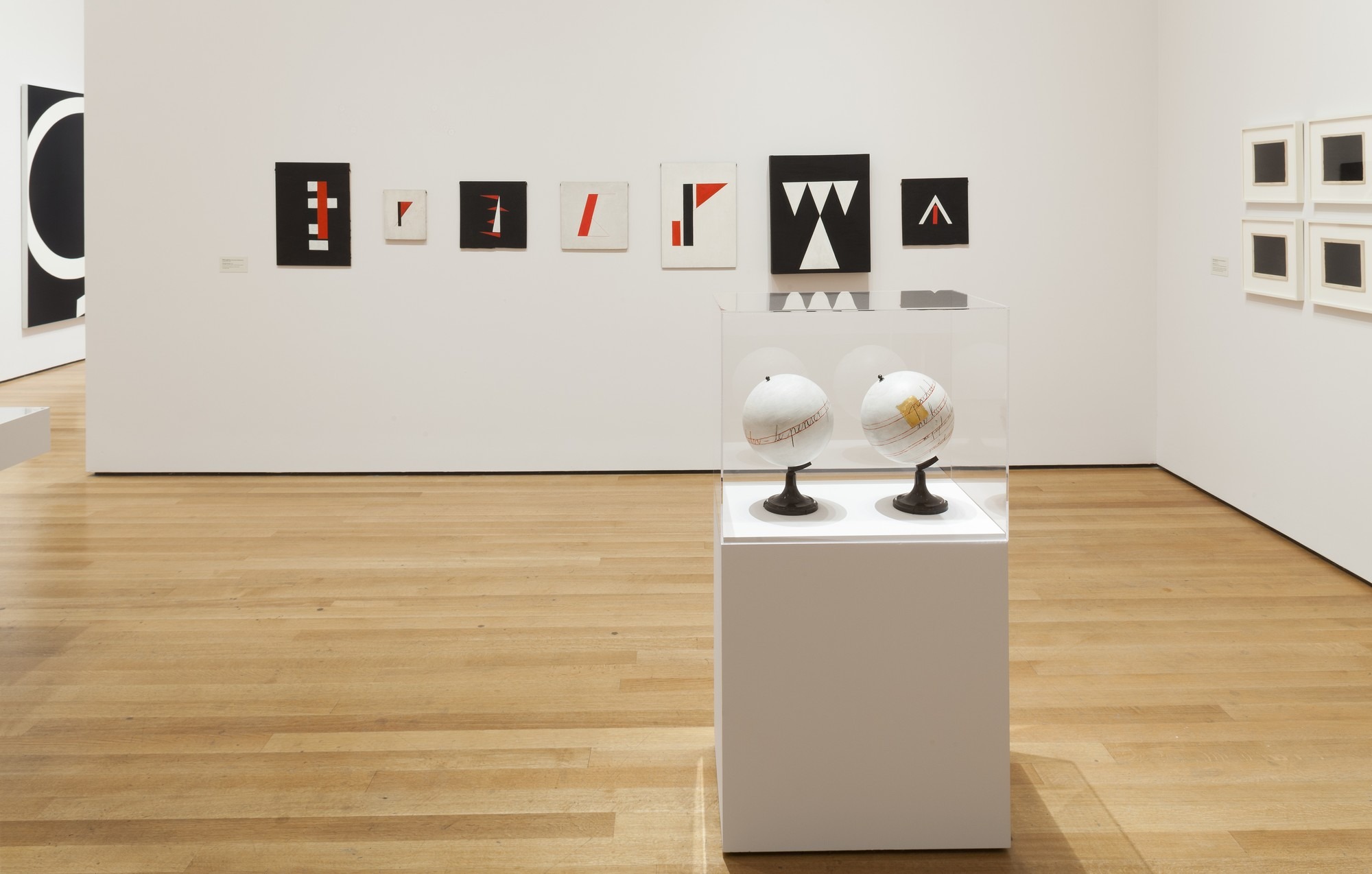Transmissions
Art in Eastern Europe and Latin America, 1960–1980
05 Sep 2015 - 03 Jan 2016

Installation view of the exhibition, "Transmissions: Art in Eastern Europe and Latin America, 1960-1980"
September 5, 2015–January 3, 2016. IN2335.14. Photograph by Thomas Griesel.
September 5, 2015–January 3, 2016. IN2335.14. Photograph by Thomas Griesel.
Transmissions: Art in Eastern Europe and Latin America, 1960–1980 focuses on parallels and connections among artists active in Latin America and Eastern Europe in the 1960s and 1970s. During these decades, which flanked the widespread student protests of 1968, artists working in distinct political and economic contexts, from Prague to Buenos Aires, developed cross-cultural networks to circulate their artworks and ideas. Whether created out of a desire to transcend the borders established after World War II or in response to local forms of state and military repression, these networks functioned largely independently of traditional institutional and market forces.
Drawn from The Museum of Modern Art’s collection, Transmissions brings together landmark works by Eastern European artists including Geta Brặtescu, Tomislav Gotovac, Ion Grigorescu, Sanja Iveković, Dóra Maurer, and the anti-art collectives Gorgona, OHO, Aktual, and Fluxus East, as well as Latin American artists such as Beatriz González, Antonio Dias, Lea Lublin, and Ana Mendieta. Particular attention is paid to the group of Argentine artists clustered around the influential Instituto Torcuato Di Tella, including Oscar Bony, David Lamelas, and Marta Minujín, who confronted the aesthetic and political implications of mass media communication—including film, television, and the telex—during a vibrant, experimental period of technological innovation and political tension. The featured artists circumvented the political status quo through unorthodox and ephemeral art forms. By utilizing or referring to mass media and communication technologies, many of these artists explored novel ways of bringing art into daily life to reach a wider public and to influence society.
Featuring series of works and major installations, several of which are on view for the first time, Transmissions highlights multiple points of contact, often initiated and sustained through collective actions and personal exchanges between artists. Many of the recent acquisitions in the exhibition were the result of research initiated through C-MAP (Contemporary and Modern Art Perspectives), MoMA's cross-departmental initiative aimed at expanding curatorial expertise in a global context. Challenging established art-historical narratives in the West and frameworks dictated by the Cold War, the works included suggest counter-geographies, alternative models of solidarity, and correspondences linking art practices in different parts of the world.
Organized by Stuart Comer, Chief Curator, Department of Media and Performance Art; Roxana Marcoci, Senior Curator, Department of Photography; and Christian Rattemeyer, The Harvey S. Shipley Miller Associate Curator, Department of Drawings and Prints; with Giampaolo Bianconi and Martha Joseph, Curatorial Assistants, Department of Media and Performance Art.
Drawn from The Museum of Modern Art’s collection, Transmissions brings together landmark works by Eastern European artists including Geta Brặtescu, Tomislav Gotovac, Ion Grigorescu, Sanja Iveković, Dóra Maurer, and the anti-art collectives Gorgona, OHO, Aktual, and Fluxus East, as well as Latin American artists such as Beatriz González, Antonio Dias, Lea Lublin, and Ana Mendieta. Particular attention is paid to the group of Argentine artists clustered around the influential Instituto Torcuato Di Tella, including Oscar Bony, David Lamelas, and Marta Minujín, who confronted the aesthetic and political implications of mass media communication—including film, television, and the telex—during a vibrant, experimental period of technological innovation and political tension. The featured artists circumvented the political status quo through unorthodox and ephemeral art forms. By utilizing or referring to mass media and communication technologies, many of these artists explored novel ways of bringing art into daily life to reach a wider public and to influence society.
Featuring series of works and major installations, several of which are on view for the first time, Transmissions highlights multiple points of contact, often initiated and sustained through collective actions and personal exchanges between artists. Many of the recent acquisitions in the exhibition were the result of research initiated through C-MAP (Contemporary and Modern Art Perspectives), MoMA's cross-departmental initiative aimed at expanding curatorial expertise in a global context. Challenging established art-historical narratives in the West and frameworks dictated by the Cold War, the works included suggest counter-geographies, alternative models of solidarity, and correspondences linking art practices in different parts of the world.
Organized by Stuart Comer, Chief Curator, Department of Media and Performance Art; Roxana Marcoci, Senior Curator, Department of Photography; and Christian Rattemeyer, The Harvey S. Shipley Miller Associate Curator, Department of Drawings and Prints; with Giampaolo Bianconi and Martha Joseph, Curatorial Assistants, Department of Media and Performance Art.
